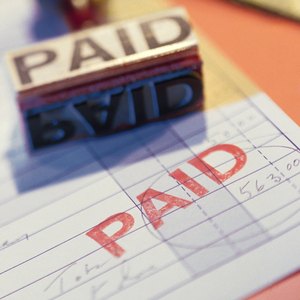
If you are paying bills or sending money through the mail, you run the risk of the envelope getting lost in transit. Money orders are similar to checks, but you pay for the money order upfront rather than wait for the check to clear your bank account. If the money order gets lost or is never cashed, you will have to file a claim with the company where you purchased it to get the money back.
Check with the agent where you purchased the money order. If you purchased the money order from a local bank, post office or store, you may be able to check the status of the money order right there. To check if the money order has been cashed, you will need to bring your receipt or money order stub with you.
Call customer service. Companies that issue money orders, such as Western Union and Money Gram, have a customer service department that can help track your money order. When calling, give the customer service agent the money order number so she can check the computer to see if it has been cashed.
Check online. Western Union and Money Gram offer an online tracking service for purchased money orders. To check the status of your money order, go to the company’s website, click on “Track Money Order” or a similar icon, enter the money order number and click “Enter” or “Search.”
Have the money order number ready. No matter how you are checking the status of your money order, you will need to have the serial number for it. This number can be found on the stub that you should have kept before sending the money order in as payment.
Tips
It is a good idea to check with the person to whom you are sending the money order to see whether it has been received. The sooner you know the money order is missing, the sooner you can file for a refund.
Warnings
There may be a fee applied to your refund request for a missing or non-cashed money order. Do not lose the money order stub. Though some companies are able to conduct a search to find the money order number for you, some do not have this capability and will not be able to check the status of the money order without the number.
References
- Western Union: Home Page
- USPS: Domestic and International Money Orders
- United States Postal Service. "Sending Money Orders." Accessed Jan. 13, 2020.
- Western Union. "Do Money Orders Have an Expiration Date?" Accessed Jan. 13, 2020.
- Western Union. "How Do I Request a Money Order Refund?" Accessed Jan. 13, 2020.
- United States Postal Service. "Money Orders - The Basics." Accessed Jan. 13, 2020.
- United States Postal Service. "Money Order Inquiry System." Accessed Jan. 13, 2020.
- MoneyGram. "Money Order Information." Accessed Jan. 13, 2020.
- MoneyGram. "Money Order Claim Card." Accessed Jan. 13, 2020.
- Western Union. "All About Money Orders." Accessed Jan. 13, 2020.
- Western Union. "Money Order Research Request." Accessed Jan. 13, 2020.
- Office of the Comptroller of the Currency. "Answers About Forgery and Fraud." Accessed Jan. 13, 2020.
Tips
- It is a good idea to check with the person to whom you are sending the money order to see whether it has been received. The sooner you know the money order is missing, the sooner you can file for a refund.
Warnings
- There may be a fee applied to your refund request for a missing or non-cashed money order.
- Do not lose the money order stub. Though some companies are able to conduct a search to find the money order number for you, some do not have this capability and will not be able to check the status of the money order without the number.
Writer Bio
Heather Leigh Landon has been a writer since 1988 when she started her career as a stringer for "The McHenry Star News." Since then she has worked for newspapers such as "The Woodstock Independent," "The Northwest Herald" and "Press Journal." Landon graduated from William Rainey Harper College with an Associate of Applied Science in journalism.

